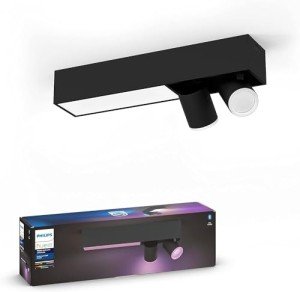10 Startups That'll Change The Interior Lighting UK Industry For The Better

Interior Lighting in the UK: A Comprehensive Guide
Interior lighting plays an essential function in creating an atmosphere, boosting performance, and revealing individual style within homes and organizations. In the UK, where the weather can be unpredictable, effective lighting is not only about aesthetic appeals however also about making spaces feel warm, inviting, and practical. This article explores different aspects of interior lighting, incorporating types, patterns, pointers, and often asked questions.
Understanding the Importance of Interior Lighting
Lighting is often thought about the backbone of interior decoration. It influences state of mind, performance, and the viewed size of spaces. The right lighting can:
- Enhance the architectural functions of a room.
- Highlight art work and decoration.
- Enhance security and security.
- Influence efficiency in workspaces.
- Develop a comfy atmosphere for relaxation.
Types of Interior Lighting
Reliable lighting design normally integrates three primary types of lighting: ambient, job, and accent.
1. Ambient Lighting
This is the primary source of light in a room, offering overall lighting. Typical sources consist of:
- Ceiling-mounted fixtures
- Chandeliers
- Recessed lighting
- Soft wall sconces
Ambient lighting produces a structure from which other lighting types can build on.
2. Job Lighting
Job lighting concentrates on particular areas to help with activities such as reading, cooking, or working. This type of lighting helps to reduce eye strain and can dramatically impact performance. Typical sources include:
- Desk lamps
- Under-cabinet lights in kitchen areas
- Reading lamps beside beds
- Mounted lights intended at work surface areas
3. Accent Lighting
Accent lighting adds drama and highlights particular items or areas, such as art work or architectural features. This type of lighting can produce visual interest and depth in a space. Sources consist of:
- Picture lights
- Decorative lamps
- Uplighters
- LED strip lights along racks
Making use of a mix of these lighting types can result in a well-balanced and multifunctional area.
Popular Lighting Trends in the UK
The interior lighting landscape in the UK continues to evolve, affected by design patterns, technology, and consumer choices. Here are some popular patterns to view:
- Smart Lighting: The introduction of smart innovation has transformed how people manage lighting in their homes. Smart bulbs and systems like Philips Hue allow users to manage brightness and color temperature level by means of their mobile phones.
- Minimalist Designs: Sleek, easy designs that blend effortlessly with interiors are dominating the market. Pendant lights with fragile frames, LED strips, and geometric shapes are especially stylish.
- Industrial Lighting: This trend showcases raw, uncovered products. Metal fixtures and Edison bulbs provide a vintage touch that is both stylish and practical.
- Eco-Friendly Options: With increasing awareness of sustainability, lots of consumers are turning to energy-efficient LED choices and fixtures made from sustainable products.
Tips for Effective Interior Lighting Design
Creating an efficient lighting strategy requires thoughtful factor to consider of various elements. Here are some tips:
- Consider the Purpose of Each Room: Every area has a different function. Consider what activities will take location and what type of lighting will support those activities.
- Layer Lighting: Employ several kinds of lighting within a room to produce depth and flexibility. Combine ambient, job, and accent lighting to enhance both aesthetics and functionality.
- Use Dimmers: Dimmers enable control over brightness levels, allowing users to adjust lighting according to mood and time of day.
- Incorporate Natural Light: Make the many of natural lights like windows. Use light, reflective colors for walls and furnishings to optimize brightness.
- Think About Color Temperature: Different color temperatures (measured in Kelvins) develop various environments. Warmer temperatures (around 2700K-3000K) are comfortable, while cooler temperature levels (4000K+) lend a more clinical or energetic feel.
Interior Lighting Mistakes to Avoid
To develop a well-lit area, it's vital to avoid common lighting pitfalls. Here are some mistakes to enjoy for:
- Underestimating Wattage: Insufficient wattage can lead to dim, unwelcoming areas.
- Disregarding Scale: Fixtures that are too small for a room can keep an eye out of place, while large fixtures can overwhelm a space.
- Over-reliance on Ceiling Lights: Relying entirely on overhead lighting can produce uninviting shadows; balance with extra lighting types.
- Poor Placement: Misplaced lights can produce areas that are too intense or too dark. Strategy positionings attentively.
Frequently asked question Section
1. What is Table Lamps UK between warm white and cool white light?
Warm white light (2700K to 3000K) produces a comfortable, inviting atmosphere, ideal for living spaces and bed rooms, while cool white light (4000K to 5000K) is more fit for workspaces as it improves concentration and clarity.
2. How can I optimize natural light in my home?
To optimize natural light, usage light-colored walls, tactically place mirrors to reflect light, and choose sheer window coverings that enable sunshine to travel through.
3. How do I choose the right light?
Consider the size of your space, the style of your design, and the function of the area. Guarantee the scale of fixtures complements the room and matches the general aesthetic.
4. Are LED lights better than traditional bulbs?
Yes, LED lights are more energy-efficient, have a longer lifespan, and can supply a variety of color temperature levels, making them a more sustainable lighting alternative.
5. What should I do if certain areas of my room stay too dark?
Think about adding extra job or accent lighting to lighten up those locations. Floor lamps, wall sconces, or even strategically put table lamps can assist relieve dark spots.
Interior lighting is an essential element of home and organization design across the UK. Comprehending the different types, present trends, and best practices can help homeowner in producing spaces that are not only stylish but also functional. With thoughtful factor to consider and planning, effective lighting can change any environment, enhancing both atmosphere and use for years to come.

